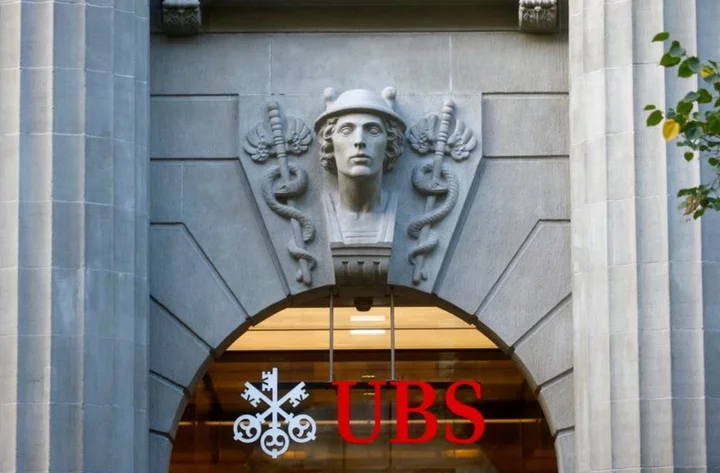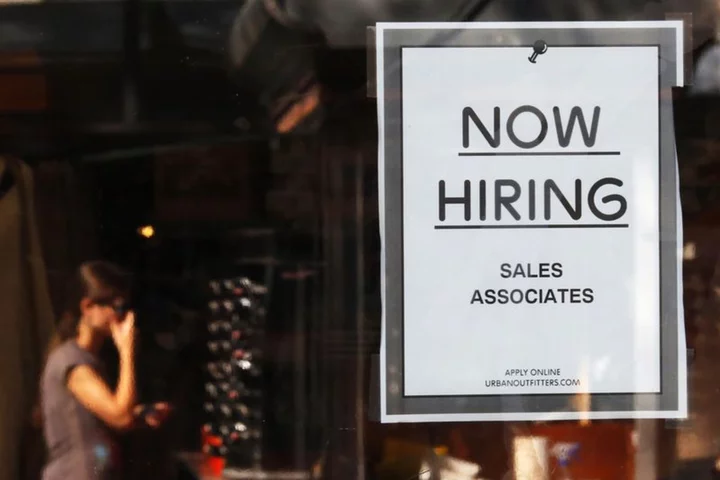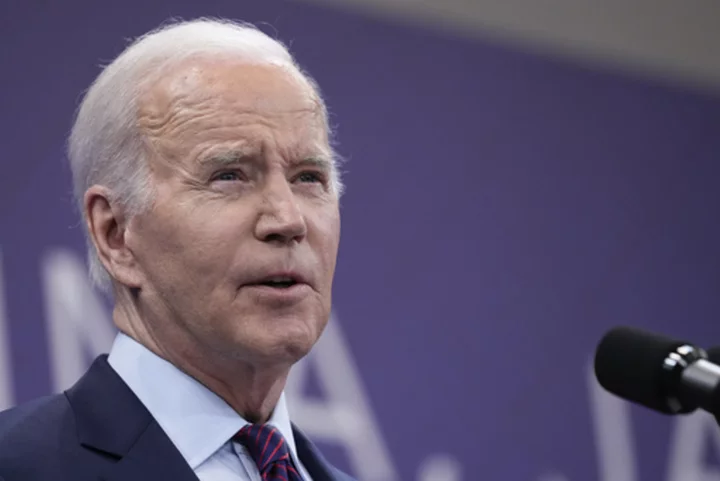After a remarkable summer of robust consumer spending and financial-market resilience, the US economy is widely expected to slow in the coming months as the Federal Reserve continues its historic inflation fight.
Investors and economists are bullish that consumer spending, the US economy's main engine, won't deteriorate too much, which should help stocks avoid a massive sell-off this year. However, investors shouldn't expect stellar returns anytime soon, either.
"We're expecting the labor market to soften somewhat the rest of the year and we've seen both credit-card balances and delinquencies increasing, so that should flow through to softer consumer spending," Matthew Palazzolo, senior investment strategist at Bernstein Private Wealth Management, told CNN. "But we're not expecting a significant recession. We're certainly expecting a softening of the economy."
Palazzolo said that would mean "markets move sideways for the balance of the year until we get better visibility into what 2024 looks like."
Overall, the stock market has soared this year, mostly thanks to chipmaker Nvidia and the hype over artificial intelligence boosting tech stocks, though shares have slumped in August. (The month is traditionally bad for equities as investors clear out for vacation.)
One economic headwind on the horizon is the resumption of student loan payments in October, which could mean Americans pare back their spending.
It's still unclear how much of an effect student loan repayments will ultimately have on spending. The Biden administration has rolled out an income-driven repayment plan, hoping to soften the blow. According to Wells Fargo, the average monthly payment among 44 million Americans with student loans is between $210 and $314.
Another key uncertainty on the minds of both Fed officials and investors is that the economy is still contending with the central bank's most aggressive inflation-busting campaign in decades. Research shows it could take at least a year for the effects of rate hikes to trickle through to the broader economy. The Fed began to lift rates in March 2022. The most recent hike was last month.
In his highly anticipated speech at the Kansas City Fed's annual economic symposium in Jackson Hole, Wyoming, Fed Chair Jerome Powell said on Friday "there may be significant further drag in the pipeline" that the economy hasn't felt yet, and he cautioned that it's unclear when those effects could take hold.
If the economy does moderate, that would be a good sign for the Fed. It has been attempting to bring exactly that about — to take some steam out of the economy and thereby reduce inflation.
Also weighing on investors' and economists' minds is the American consumer's credit card addiction. Americans have steadily racked up debt this year as their savings accounts have dwindled. Recent research from the San Francisco Fed predicts that the excess savings Americans accumulated from pandemic-related stimulus payments and not spending during lock-downs will run out by the end of this quarter.
Those factors could also slow consumer spending in the next few critical months, as students return to school and the holiday season approaches, Sinead Colton Grant, head of BNY Mellon investor solutions, told CNN.
"We're watching the consumer, since it is a very big driver of the US economy, but we believe those effects are likely to be at the margin," she said. "If the holiday spending period is less robust, that would be a potential warning sign about the strength of the consumer."
Europe's biggest economy is stagnating
It's been nearly two decades since Germany shrugged off its "sick man of Europe" label with a series of labor market reforms that ushered in years of economic outperformance.
Unfortunately for Berlin, the phrase is making a comeback, my colleague Anna Cooban reports.
Sticky inflation and three straight quarters of falling or stagnating output have put Europe's biggest economy in the doldrums.
So much so that the International Monetary Fund expects the country to be the only advanced economy to shrink this year — forecasting a contraction of 0.3%, compared with an average expansion of 0.9% for the 20 countries, including Germany, that use the euro currency.
A prolonged recession would be a disappointing outcome for an economy that, in the decade following the 2008-9 financial crisis, grew by an average of 2% a year, boasted a budget surplus for most of that period and saw its exports boom.
Read more here.
A big week for markets and the economy is on tap
Tuesday: Earnings from Best Buy and Big Lots. S&P Global releases its S&P CoreLogic Case-Shiller National Home Price Index for June. The US Labor Department releases July figures on job openings, quits, hires and layoffs. The Conference Board releases its Consumer Confidence Index for August.
Wednesday: The US Commerce Department releases its second estimate of second-quarter gross domestic product. The National Association of Realtors reports home sales based on contract signings in July. China's National Bureau of Statistics releases August business surveys gauging economic activity in China's manufacturing sector.
Thursday: Earnings from Victoria's Secret. The European Union's statistics agency releases inflation data for August. The US Commerce Department releases July data on household spending, income and the Fed's preferred inflation gauge. The US Labor Department reports the number of new applications for jobless benefits in the week ended Aug. 26.
Friday: The US Labor Department releases August figures on the labor market, including monthly payroll gains, wage growth, and the unemployment rate. S&P Global and the Institute for Supply Management release August business surveys gauging economic activity in the US manufacturing sector.









